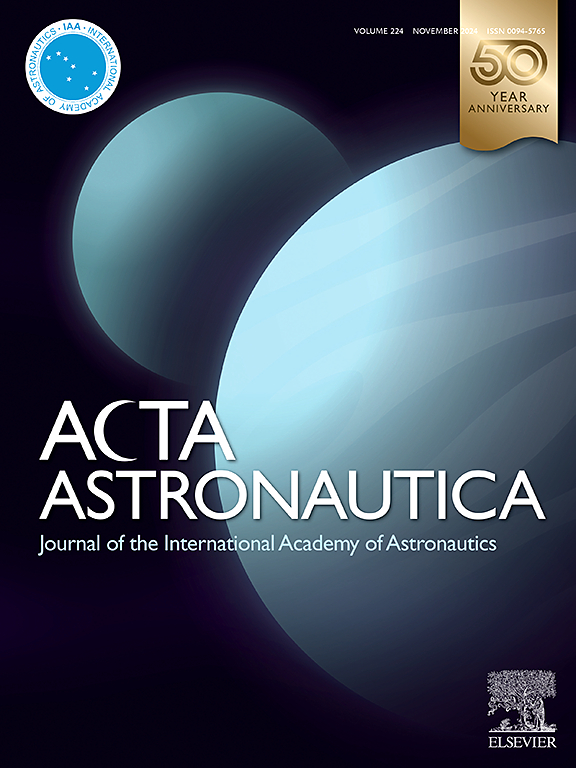超小型卫星飞行任务架构和飞行任务保证战略
IF 3.1
2区 物理与天体物理
Q1 ENGINEERING, AEROSPACE
引用次数: 0
摘要
自问世以来,超小型卫星已发展成为一个复杂而有能力的航天器。然而,尽管取得了这些进步,预期应用的实现仍然遥遥无期。为此,本文探讨了三种飞星任务架构,即无人机、蜂群和蜂巢,以描述真正太空应用中可能的飞星任务。从单个飞卫星开始,每种架构都代表着网络复杂性的增加,因此本文提出使用图论来描述、理解和模拟飞卫星系统。还为每种任务架构提出了一个简单的可靠性模型,并进行了模拟,以生成系统生命周期的概况。针对每种结构的潜在应用对结果进行了讨论。由于微小卫星固有的不稳定性,每种结构对于短时间飞行任务来说都是可行的。此外,中长期飞行任务对于具有足够大种群的蜂群和蜂巢来说也是可行的。最后,考虑到每个系统的生命周期情况,对其应用进行了重新审查。本文章由计算机程序翻译,如有差异,请以英文原文为准。
Femtosatellite mission architectures and mission assurance strategies
Since its inception, the femtosatellite has developed into a complex and capable spacecraft. However, despite such advances the implementation of predicted applications remains elusive. In response, this paper explores three femtosatellite mission architectures, the drone, swarm, and hive, to characterize what possible femtosatellite mission could be envisioned for true space applications. Starting from a single femtosatellite, each architecture represents an increase in network complexity, so the use of graph theory is proposed as a means for characterizing, understanding, and modelling femtosatellite systems. A simple reliability model is also proposed for each of the mission architectures, and a simulation is carried out to generate a profile of the system’s lifecycle. The results are discussed for each of the architectures in relation to potential applications. Each of the architectures was shown to be feasible for short duration missions due to the inherent unreliability of femtosatellites. Additionally, mid- and long-duration missions were shown to be possible for swarms and hives with sufficiently large populations. Finally, applications are re-examined considering the lifecycle profile exhibited by each system.
求助全文
通过发布文献求助,成功后即可免费获取论文全文。
去求助
来源期刊

Acta Astronautica
工程技术-工程:宇航
CiteScore
7.20
自引率
22.90%
发文量
599
审稿时长
53 days
期刊介绍:
Acta Astronautica is sponsored by the International Academy of Astronautics. Content is based on original contributions in all fields of basic, engineering, life and social space sciences and of space technology related to:
The peaceful scientific exploration of space,
Its exploitation for human welfare and progress,
Conception, design, development and operation of space-borne and Earth-based systems,
In addition to regular issues, the journal publishes selected proceedings of the annual International Astronautical Congress (IAC), transactions of the IAA and special issues on topics of current interest, such as microgravity, space station technology, geostationary orbits, and space economics. Other subject areas include satellite technology, space transportation and communications, space energy, power and propulsion, astrodynamics, extraterrestrial intelligence and Earth observations.
 求助内容:
求助内容: 应助结果提醒方式:
应助结果提醒方式:


